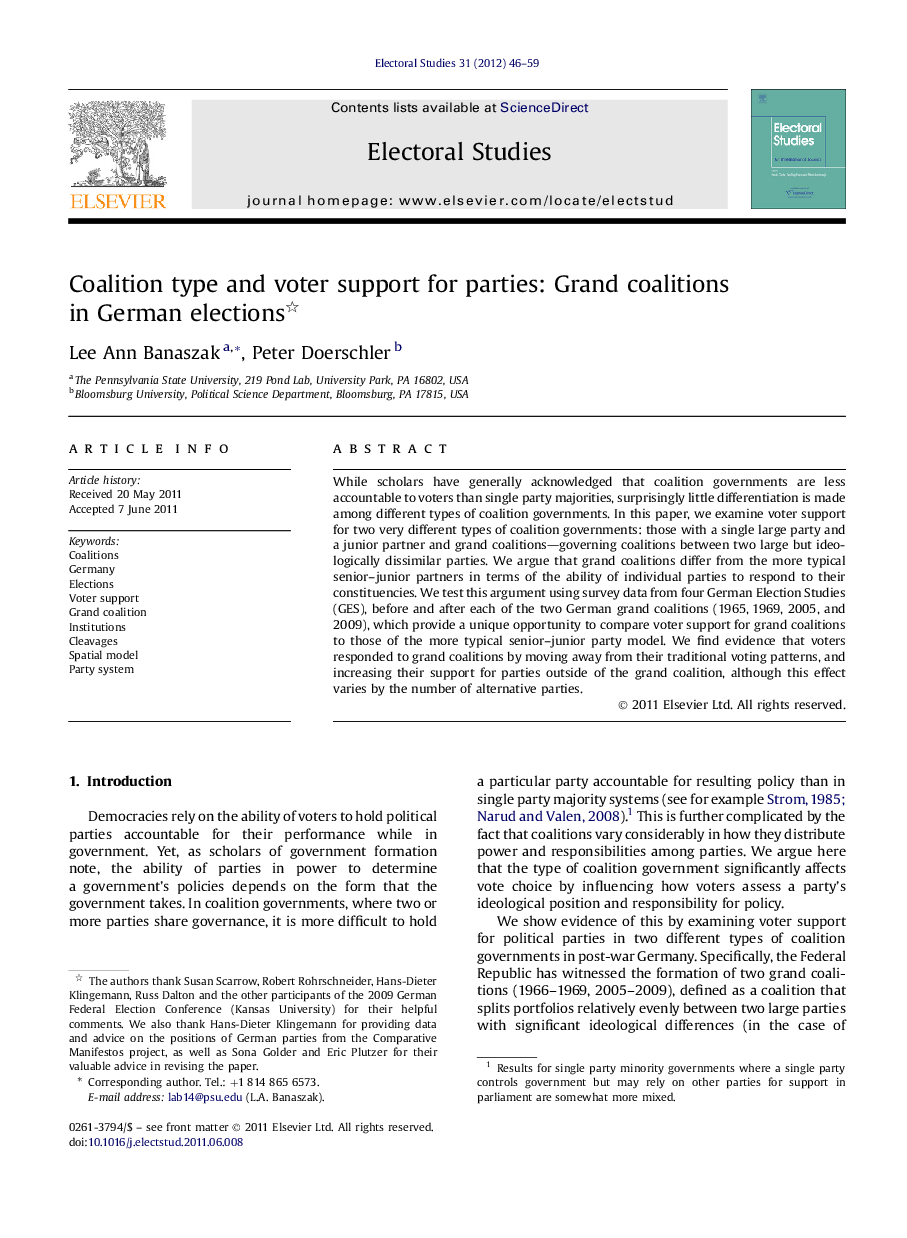| Article ID | Journal | Published Year | Pages | File Type |
|---|---|---|---|---|
| 1052105 | Electoral Studies | 2012 | 14 Pages |
While scholars have generally acknowledged that coalition governments are less accountable to voters than single party majorities, surprisingly little differentiation is made among different types of coalition governments. In this paper, we examine voter support for two very different types of coalition governments: those with a single large party and a junior partner and grand coalitions—governing coalitions between two large but ideologically dissimilar parties. We argue that grand coalitions differ from the more typical senior–junior partners in terms of the ability of individual parties to respond to their constituencies. We test this argument using survey data from four German Election Studies (GES), before and after each of the two German grand coalitions (1965, 1969, 2005, and 2009), which provide a unique opportunity to compare voter support for grand coalitions to those of the more typical senior–junior party model. We find evidence that voters responded to grand coalitions by moving away from their traditional voting patterns, and increasing their support for parties outside of the grand coalition, although this effect varies by the number of alternative parties.
► Compares causes of voter support before and after the two German grand coalitions. ► Find traditional constituencies abandoned CDU and SPD after grand coalitions. ► In 2009 alternative parties on Left attract traditional SPD voters.
